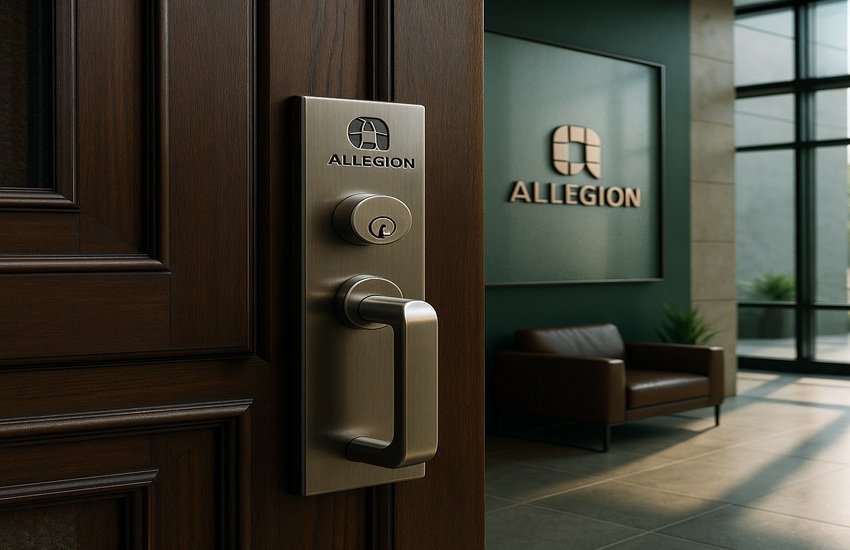Sign Up For Free To Keep Reading
Alcon’s recent agreement to acquire STAAR Surgical for $28 per share—representing a 59% premium to STAAR’s 90-day VWAP and valuing the company at approximately $1.5 billion—marks a bold move to fortify its refractive surgery arm beyond laser-based solutions. With the global pool of high myopes set to reach half the population by 2050, and nearly 500 million individuals already fitting that category, the implantable collamer lens (ICL) technology from STAAR complements Alcon’s existing LASIK and cataract portfolios. Coupled with Alcon’s strong Q1 performance—$2.5 billion in revenue, 20.8% core operating margin, and a wave of major product launches including Unity VCS and PanOptix Pro—the STAAR deal could accelerate surgical vision correction adoption and reinforce Alcon’s leadership across the full spectrum of myopia treatment. Here are four key drivers illustrating potential synergies that could crystallize value for Alcon shareholders.
Product Portfolio Diversification & Cross-Selling Leverage
By integrating STAAR’s EVO ICL™ family alongside its market-leading LASIK and cataract franchises, Alcon can present a truly end-to-end refractive surgery suite. Implantable collamer lenses address moderate to high myopia with or without astigmatism via a minimally invasive, reversible procedure that spares corneal tissue—an offering distinct from Alcon’s excimer lasers and femtosecond platforms. Once STAAR’s ICLs are folded into Alcon’s distribution network and sales force, cross-selling opportunities should flourish: cataract surgeons now equipped with PanOptix Pro and Unity VCS can readily introduce ICL for younger or high-risk patients seeking permanent visual correction, while existing contacts-and-drops Vision Care reps can identify candidates for surgical referral. Moreover, bundling ICL with comprehensive pre- and post-operative care could raise average selling prices and implantable revenue beyond the $420 million Q1 baseline. Enhanced product mix—spanning contact lenses, ocular health, laser and phaco platforms, and now collamer implants—would not only widen Alcon’s addressable market but also create a durable competitive moat, as few rivals possess such an integrated continuum of refractive solutions.
Accelerated Market Expansion & Geographic Footprint Synergies
STAAR’s established presence in over 75 countries—bolstered by manufacturing sites in California and Switzerland—aligns with Alcon’s own network spanning 17 manufacturing plants across 140+ markets. This geographic complementarity positions Alcon to optimize regional production and distribution, especially in Asia where STAAR experienced demand headwinds in China while Alcon’s contact-lens and cataract consumables businesses continued to grow. Leveraging Alcon’s scale in Europe and North America, STAAR’s EVO ICL™ can gain accelerated regulatory approvals, deeper hospital partnerships, and broader insurer coverage. Conversely, STAAR can benefit from Alcon’s strong foothold in emerging markets—where refractive surgery penetration remains low—to introduce EVO ICL™ in under-served patient segments. Supply chain resilience will improve as well: Alcon’s “make-for-region” model can absorb STAAR’s output, smoothing the operational disruptions from recent global tariff changes. Ultimately, combining Alcon’s marketing prowess with STAAR’s clinical track record could compress time-to-market for new indications and address a projected cataract procedural growth of low single digits internationally, while capitalizing on a contact-lens market expanding mid-single digits globally.
Economies Of Scale & Operational Cost Synergies
At a $1.5 billion equity valuation, the STAAR deal implies an attractive entry relative to Alcon’s LTM EV/Revenues of 4.81x and EV/EBITDA of 20.45x, potentially unlocking significant cost synergies. Consolidating R&D, manufacturing, and administrative functions can trim duplicative spend—especially in overlapping R&D on biocompatible materials and surgical platforms—while integrating procurement for raw Collamer polymer and laser console components can drive supplier leverage. Realizing even a 5% reduction in combined cost of goods sold could offset the $80 million annual tariff headwind Alcon now faces in China. Additionally, combining logistics networks reduces per-unit shipping costs critical for tch-intensive surgical devices. Shared digital platforms for training and surgeon support—leveraging Alcon’s global surgeon network and STAAR’s ICL specialists—can flatten the steep learning curve for EVO ICL™ procedures, reducing onboarding costs. As accretive by year two per management guidance, these operational efficiencies should enhance core operating margins, cushioning mid-year tariff pressures and supporting the guided 20–21% full-year core operating margin target despite recent BD&L investments.
Innovation Acceleration Through R&D & Clinical Synergies
STAAR’s proprietary Collamer® material and EVO ICL™ design innovations—backed by over 3 million implants—complement Alcon’s decade-long investment in digital surgical platforms like Unity VCS and advanced IOL optics such as PanOptix Pro. By pooling R&D resources, Alcon can fast-track enhancements to ICLs (e.g., extended diopter ranges, astigmatism-correcting toric variants) while integrating smart fluidics and 4D phaco energy control into lens delivery systems. Combined clinical trial expertise—spanning cell therapy for corneal dysfunction (Aurion Biotech) and next-gen robotic laser cataract platforms (ALLY by LENSAR)—creates a robust innovation pipeline capable of addressing both anterior and posterior segment conditions. Data-driven synergies may emerge from shared patient outcomes platforms, enabling real-world evidence analyses that inform iterative device improvements, reimbursement negotiations, and market segmentation. Furthermore, joint regulatory interactions—leveraging Alcon’s extensive history of CE Mark, FDA approvals, and payer engagements—can streamline global pathways for future STAAR innovations. This strategic R&D alignment promises a more diversified product cadence, mitigating reliance on single launches and preserving long-term growth amid evolving refractive surgery landscapes.
Key Takeaways
While the proposed acquisition of STAAR Surgical could meaningfully broaden Alcon’s refractive surgery leadership, amplify global reach, and generate cost and R&D synergies, it also introduces integration complexity and sizable upfront financing. Balancing the $1.5 billion equity investment against Alcon’s current LTM EV/Revenue multiple of 4.81x and EV/EBITDA of 20.45x suggests valuation discipline is critical: overpaying—or underestimating integration costs—could compress Alcon’s NTM EV/EBITDA of 16.85x and NTM P/E of 26.95x. Conversely, realizing promised accretion by year two depends on seamless alignment of sales channels, manufacturing footprints, and clinical teams. Ultimately, the transaction’s merits will hinge on Alcon’s ability to navigate execution risks, absorb tariff and operational headwinds, and deliver on promised cross-business innovation—underscoring how a once-in-a-decade opportunity can cut both ways for long-term shareholder value.





